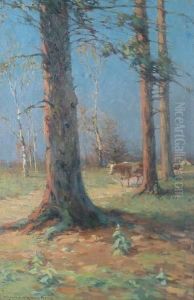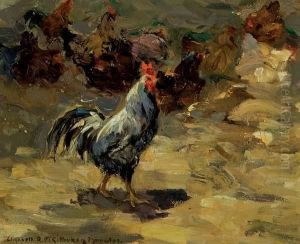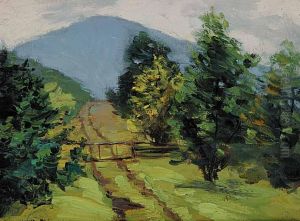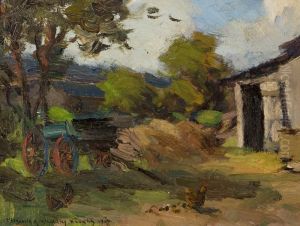Elizabeth Mcgillivr. Knowles Paintings
Elizabeth McGillivray Knowles was a Canadian painter known for her landscapes and floral still lifes. Born on September 7, 1869, in Toronto, Ontario, she was one of Canada's early women artists who managed to achieve professional recognition during her lifetime. Knowles studied art from a young age and honed her skills at institutions such as the Ontario School of Art, where she was under the tutelage of renowned Canadian artists like George Agnew Reid and William Cruikshank.
Her education continued in Europe, which was quite an accomplishment for a woman of that era. She studied in Paris at the prestigious Académie Colarossi, one of the progressive art schools open to both female and male students, unlike the École des Beaux-Arts, which was closed to women until 1897. It was in Paris that Knowles was exposed to the works of the Impressionists, which influenced her style, leading her to create works with looser brush strokes and a brighter palette.
Throughout her career, Elizabeth McGillivray Knowles was an active member of the art community. She was associated with the Ontario Society of Artists and the Royal Canadian Academy of Arts. Her work was widely exhibited, including shows at the Art Association of Montreal and the Canadian National Exhibition, and she also gained international exposure through exhibitions in places such as Paris and London.
Knowles' landscapes often depicted scenes of Quebec and Ontario, capturing the rich and varied Canadian scenery with a particular focus on the effects of light and atmosphere. Her floral works, on the other hand, showcased her ability to depict the delicacy and vibrancy of flowers, making them popular among collectors.
Elizabeth McGillivray Knowles' contribution to Canadian art was significant, not only in her own body of work but also in paving the way for future generations of female artists. She passed away on October 4, 1928. Her paintings continue to be admired for their beauty and historical value, providing insight into the Canadian landscape and art scene of the late 19th and early 20th centuries.



